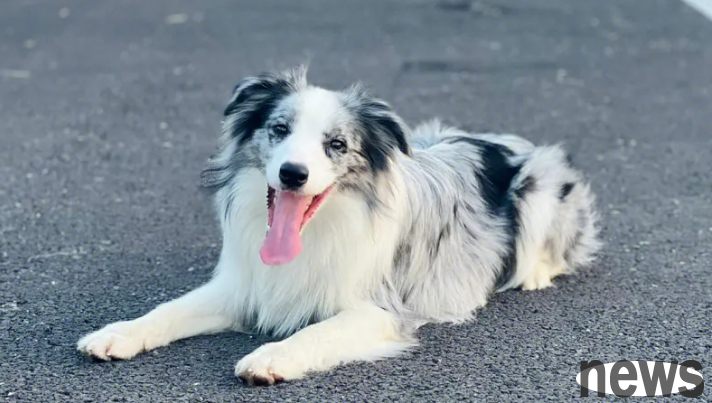Many parents want to take their babies to the hospital for sterilization surgery for their hairy children, but when they hear the doctor's surgery, anesthesia is risky and in severe cases, they will start to worry about whether to perform surger...
Many parents want to take their babies to the hospital for sterilization surgery for their hairy children, but when they hear the doctor's surgery, anesthesia is risky and in severe cases, they will start to worry about whether to perform surgery on the little guy? Some babies also need emergency surgery because of illness, such as taking foreign bodies, urinary stones, or having uterine pus because they have not been sterilized when they were young, etc., which require surgery to cure diseases. However, because their parents are confused about the risk of anesthesia, they miss the opportunity for surgery, resulting in the tragedy of the death of the hairy children. Let’s hear what the doctor said ~
What is anesthesia
In layman's terms, anesthesia is the temporary disappearance of intuition, which can allow the animal to perform surgery in a quiet state so that the animal will not feel potentially severe pain during the operation. The ideal anesthesia state should be unconscious, painless, memoryless, and stable signs. This state should satisfy the anesthesiologist, surgeon and animal, rather than taking a shot and sleeping as some parents think. Injection anesthesia like parents imagine is very dangerous, and the risk of anesthesia is also very high. When there is danger during animal surgery, the anesthesia cannot be stopped in a hurry to awaken the animal. In order to avoid the risk of injection anesthesia, Dr. Dong Yi, Barbie Tang, was the first to introduce respiratory anesthesia into China. Respiratory anesthesia can stop anesthesia as soon as possible when an animal is in danger, increase oxygen flow, and wake up quickly, causing little damage to the body. It will not be like anesthesia in the body. It will take several hours to metabolize the anesthetic drugs in the body, greatly increasing the burden on the liver and kidneys.

What are the risks of anesthesia?
1. Depending on the age, breed, and body condition of the animals, the anesthesia complications they face are also different: cardiac arrest, bradycardia, arrhythmia, insufficient ventilation, hypoxia, hypotension, and hypertension.
2. The incidence of heartbeat and respiratory arrest related to general anesthesia is only the case in dogs and cats. When cardiac arrest occurs, performing CPR in a shorter time can improve the survival rate of animals. If heartbeat and respiratory arrest occur, volatile irrigation should be turned off immediately to increase oxygen flow. There is hypoxia before the animal has a sudden arrest. This is not a problem for anesthesia cases with tracheal intubation and ventilation, which reflects the advantages of respiratory anesthesia. The order of rescue during cardiac breathing should be ABCD (open airway, artificial respiration, artificial circulation, medicine).
3. There are many causes of bradycardia, such as elevated intracranial pressure (Chushing's reflex), buccephaly, athlete quality, hyperkalemia and hypoxemia, and the more common causes are hypothermia. Bradycardia may be a sign of sudden heartbeat breathing, especially in cats.
4. Tachycardia is caused by persistent excitation at ectopic nodes located in cardiomyocytes or Purkinje conduction systems that can cause VF. Hypoxia, electrolyte changes, trauma, sepsis, pancreatitis, gastric dilated intestinal torsion, ischemia, severe pain, primary heart disease, and other syndromes can all cause tachycardia. Lidocaine is a medicine that is needed to treat tachycardia.
Although there are many complications of anesthesia, professional anesthesiologists can provide reasonable induction anesthesia protocol by evaluating the preoperative condition of animals. The advantage of induction anesthesia (balanced anesthesia/compound anesthesia) is that it can reduce the dose of anesthesia, reduce side effects, and increase synergistic effects. During the operation, the anesthesiologist can fully judge the animal's condition with the help of an electrocardiogram monitor, and can discover potential anesthesia risks as soon as possible to protect the life safety of the animal!

What consequences will the risk of anesthesia cause?
❥ The prolongation of the awakening time
The awakening time depends on the animal's own pathophysiological condition, anesthetic medication, management, as well as the type of surgery, and the time of surgery. Overdose of drugs, wrong timing of administration, respiratory failure, abnormal body temperature, metabolic disorders such as hypoglycemia, severe hyperglycemia, electrolyte disorders, acidosis, etc. will all cause delayed awakening. For inhalation anesthesia, the rate of awakening is directly related to the degree of alveolar ventilation, so hypoventilation is a common cause of delayed awakening.
❥ Injury to liver, kidney and lung function
General anesthesia leads to heart inhibition, blood vessel contraction, and reduced renal blood flow. During positive pressure ventilation, it will also affect the return of the blood volume, which will eventually lead to a decrease in urine volume and affect renal function. The liver is extremely sensitive to any hypotension and hypoxia during the operation. 20%-30% of the liver arteries bear 60%-80% of the liver support. The damage to liver function by hypoxia during the operation has nothing to do with anesthesia technology. Prolonged hypotension can lead to ischemic hepatitis.
❥ Acute heart failure
Perioperative acute heart failure animals are mostly accompanied by severe cardiovascular and respiratory diseases.
❥ Anesthesia death
Inaccurate assessment of animal physical condition, improper selection of anesthetic drugs, and improper anesthesia methods will increase the risk of anesthesia. Inadequate detection of animals after surgery leads to hypoxia and causing cardiac arrest or brain death in animals. It is a common cause of anesthesia death in animals.
How to avoid anesthesia risks as much as possible
In addition to the animal's own physical condition, anesthesiologists, anesthesia equipment, and surgeons are all factors that directly affect the risk of anesthesia.
In addition, anesthesia plans are more important, including: anesthesia method, duration of surgery or operation, position, selection of pre-ansthesia drugs, expected potential complications, emergency management, pain management, airway management, fluid management, body temperature management, perioperative monitoring, etc. To do this, you need a team that cooperates with tacit understanding, rich experience, and takes animal life as the first element (Barbie Hall Animal Hospital expert team, click to learn). To sum up, parents of hairy children should choose regular and professional hospitals for the sake of their baby's health!